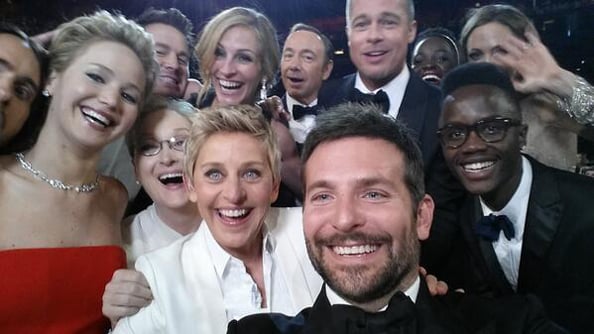Love them or hate them, but ‘selfies’ are everywhere, even before Ellen Degeneres’ famous Oscar post. Social media feeds are inundated with #duckface, #nomakeup and #selfienation hashtags but this trend (excuse the pun) is now being linked to the rise of facial plastic surgery in the under 30 age group.
According to a new study by the American Academy of Facial Plastic and Reconstructive Surgery (AAFPRS), self photo-sharing increases body image hang-ups as there’s an increasing pressure to portray perfection.
The annual poll studies a select group of AAFPRS’ 2,700 members in order to reveal the latest trends in facial cosmetic surgery. Results showed that 13 per cent of members noticed a correlation between the increase of photo sharing on social media sites and patients’ dissatisfaction with their own image. As a result of the ‘selfie’ obsession, members noted a 10 per cent increase in rhinoplasty from 2012 to 2013, as well as a seven per cent rise in hair transplants and a six per cent increase in eyelid surgery.
“Social platforms like Instagram, Snapchat and the iPhone app selfie.im, which are solely image based, force patients to hold a microscope up to their own image and often look at it with a more critical eye than ever before,” says Edward Farrior, MD, President of the American Academy of Facial Plastic and Reconstructive Surgery. “These images are often the first impressions young people put out there to prospective friends, romantic interests and employers and our patients want to put their best face forward.”
Results of the survey also show the difference between men and women’s cosmetic surgery preferences. Women continue to make up the bulk of facial surgery candidates, accounting for 81 per cent of all surgical and non-surgical procedures in 2013.
The most common cosmetic surgery procedure across both sexes continues to be the rhinoplasty, with each surgeon averaging 37 procedures per year.
Image: Twitter













